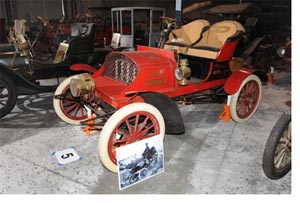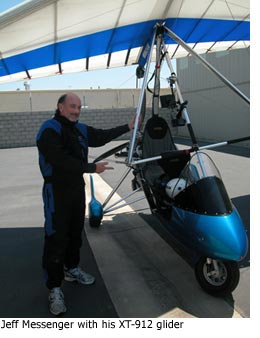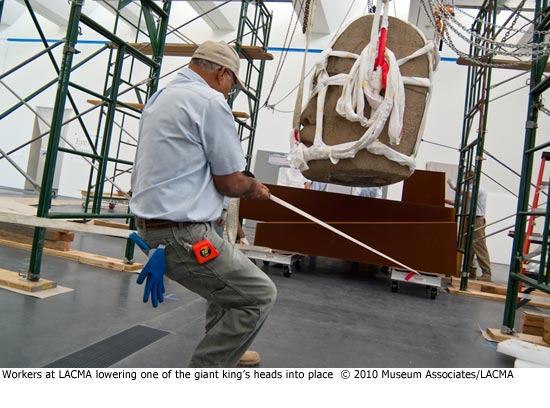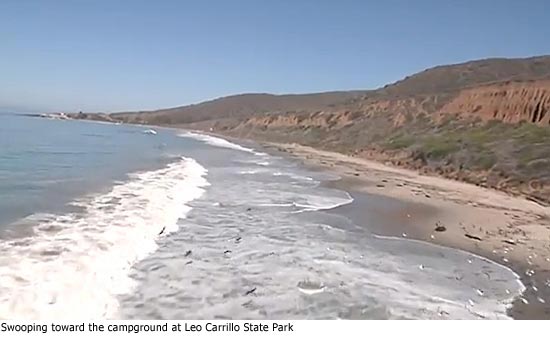A chance for high school artists to bask in “Spotlight” [updated]
September 22, 2010
Calling all teen artists: this just might be your time to shine.
For 23 years, the Music Center’s Spotlight Awards have given high school students in the seven-county Southern California region a chance to hone their audition and performing skills and showcase their visual arts portfolios, receive a professional evaluation from a panel of judges, and compete for up to $5,000 in individual arts scholarships.
Interested students can apply in one or more of the following categories:
- Classical and non-classical voice
- Classical and jazz instrumental
- Ballet and non-classical dance
- Photography and two-dimensional art
All students receive an initial audition and evaluation, and proceed through rounds of additional competition, training and guidance to a final selection of winners, who will be feted and given the chance to perform or display their work at a special spring awards dinner banquet at the Music Center’s Dorothy Chandler Pavilion.
Students may submit applications on-line or by mail, but don’t delay – this year’s deadlines are October 1, 2010 for performing arts, and December 1, 2010 for visual arts. There’s no entry fee, and full details from how to apply to the calendar of events may be found here.
Posted 9/22/10
Updated 9/30/10: The Music Center has extended the deadline for applicants in performing arts categories. Those applications must be submitted online or postmarked by Friday, October 8. The visual arts application deadline remains the same: Wednesday, December 1.
Take a spin through these wheels
September 22, 2010
 The Natural History Museum’s car collection—a dazzling amalgamation of California-centric vehicles—is ready to roll out the welcome mat for visitors. Public tours of the Gardena storage facility where the vehicles are housed will begin Oct. 1. Reservations are required for the tours, which will last about an hour and take place on the first Friday of the month. Call (213) 763-3505 for reservations or to arrange a group tour. All visitors must be 16 or older. Admission is $10; $8 for museum members.
The Natural History Museum’s car collection—a dazzling amalgamation of California-centric vehicles—is ready to roll out the welcome mat for visitors. Public tours of the Gardena storage facility where the vehicles are housed will begin Oct. 1. Reservations are required for the tours, which will last about an hour and take place on the first Friday of the month. Call (213) 763-3505 for reservations or to arrange a group tour. All visitors must be 16 or older. Admission is $10; $8 for museum members.
And armchair oglers can always check out the collection here.
Posted 9/22/10
Social workers get LAPD backup
September 22, 2010
Attention, county child social workers: the LAPD is riding with you now.
The city police department just became the first non-L.A. County agency to supply case information to a computer database called the Family and Children’s Index that aids social workers launching emergency child-welfare investigations.
“This is groundbreaking,” said Carlos Pineda, principal analyst in the Chief Executive Office’s service integration branch, who is directing an expansion and improvement of FCI that began last year in the wake of several highly-publicized children’s deaths.
The LAPD deal was finalized as the Board of Supervisors approved a memorandum of agreement this week between County CEO William T Fujioka and LAPD Chief Charlie Beck that enables the department to begin entering data on thousands of cases into the FCI database.
The database provides emergency child social workers from the Department of Children and Family Services with a quick overview of how a family stands with legal, mental health and other government entities as they launch emergency investigations into allegations of child neglect or abuse. It uses a “pointer” system that lists the existence of relevant contacts or cases for family members, and provides a contact at each department for social workers to call for more information.
Until now, the system’s law-enforcement data has come solely from the Sheriff’s Department, covering county unincorporated areas and contract cities such as West Hollywood and Malibu. (The District Attorney also inputs information from prosecutions.) The infusion of data from the LAPD, covering the city’s 4 million residents, should more than double the number of law enforcement cases flagged in FCI, said Garrison Smith, the CEO’s chief point man on FCI.
The one-year agreement will cost the county $37,500 in operating costs. County officials hope that if the program is successful, it can be renewed—and expanded to other police agencies.
“If the LAPD agreement becomes a template, there are another 45 police agencies that potentially could participate,” including those in Long Beach, Santa Monica, Burbank and Glendale, Pineda said.
The LAPD agreement is the latest in an ongoing reform effort to step up the quality and utility of FCI. Despite being in place since the mid-1990s, the system was consistently underused because key agencies were not entering relevant data regularly.
Last year, supervisors directed that participating county agencies re-train workers in the use of FCI to improve the entry of key information, and to ensure that DCFS social workers tapped into the system before launching investigations. In addition, agencies have made staff available to field social workers’ inquiries around the clock. And the county’s Department of Health Services is now taking part in the data entry program.
The efforts seem to be boosting usage of the system. Over the past year, the number of queries doubled, from 13,700 last summer to 27,500 in August.
FCI may get another expansion soon if, as expected, Gov. Arnold Schwarzenegger signs Assembly Bill 2322 into law. The bill would broaden FCI to include data about child-welfare convictions by any member of a child’s household, not just family members. The additional data is important because emergency cases can involve potential abuse or neglect by, say, a mother’s live-in boyfriend.
Despite the improvements, the system still experiences lag times.
“I know from personal experience that responses are seldom immediate,” Mike Ross, a supervising children’s social worker at DCFS, told supervisors at Tuesday’s meeting. “FCI is only as good as information in the social worker’s hand when he is making life or death decisions about the child.”
Posted 9-22-10
Drop the salt and nobody gets hurt
September 22, 2010
 Don’t take this medical advice with a grain of salt.
Don’t take this medical advice with a grain of salt.
Los Angeles County public health officials say many of us are getting way too much sodium in our daily diets—most of it from processed food or restaurant meals. Those salty snacks and meals are feeding more than just hunger; they’re also fueling high blood pressure levels that are leading to serious health consequences here and across the country.
Jumping on board the National Salt Reduction Initiative led by New York City, county health officials are urging people to trim their salt intake by reading nutrition labels carefully, preparing more fresh foods at home and finding ways to cook with less salt.
If everyone in the county reduced their daily sodium content by 20%—about the amount found in a half cup serving of canned chicken noodle
soup—that would be enough to stave off 52,629 hypertension cases here and save $102 million in annual health care costs, county researchers say in a new report. As it stands now, the average Angeleno is consuming 50% more sodium each day than the 2,300 mg, or one teaspoon, that’s recommended. The advisable amount is lower (2/3 of a teaspoon, or 1,500 mg) for people with high blood pressure, those over 40 and African Americans, who are at higher risk for hypertension.
Cutting down “is worth doing. There’s no downside in reducing sodium,” says Dr. Tony Kuo, director the Public Health Department’s Office of Senior Health.
Salt intake has increased significantly over the past 30 years, contributing to widespread high blood pressure, which in turn can lead to problems ranging from heart attacks and strokes to kidney failure. Some 48% of county residents between the ages of 45 and 64 have hypertension, as do 65% of those over 65, the report says.
Troublingly, young people between the ages of 8 and 17 also are experiencing higher blood pressure these days, with the increases greatest among African American and Latino children.
The good news is that most diners won’t even notice what they’re missing if they phase out salt gradually. “The trick,” Kuo says, “is not to abruptly reduce the sodium.”
The department is even providing some links to low-salt recipes. Lemon and fresh herbs, anyone?
Posted 9/22/10
A push for receivership in Bell
September 21, 2010
As city leaders in Bell were being arrested Tuesday, Los Angeles County Supervisors voted to ask state Attorney General Jerry Brown to consider a range of legal actions, including moving to place the scandal-plagued city under an independent receivership.
Supervisors voted 4-0 in favor of the motion by board chair Gloria Molina. Supervisor Michael D. Antonovich was not present.
“I think we have a duty here to start sorting out what is our role and responsibility to these constituents,” Molina said before the vote. “They’re my constituents as well as this entire board’s constituency, and we’re trying to figure out how to bring order.”
The motion urged Brown to “use every legal measure at his disposal” to prevent further harm to the residents of Bell, where exorbitant salaries for public officials have prompted a public uproar, along with a series of state and local investigations into corruption and improper taxation.
Brown, who is running for governor against Meg Whitman, recently sued Bell officials for fraud and misuse of public funds.
In addition to suggesting the appointment of an independent receiver to operate the city and audit its contracts and accounts, Molina’s motion also directed the city of Bell to provide the county with $2.9 million in wrongfully-imposed taxes, so that taxpayers could be reimbursed.
Bell resident Nestor Valencia, a local activist, was among those urging supervisors to take action on Tuesday.
“Our government has let us down in the city of Bell,” he said, “and it has done so for many years.”
Residents of the city cheered as news of the arrests of current and former leaders broke, the Los Angeles Times reported.
Posted 9/21/10
A head of their time
September 21, 2010
Before L.A.’s cultural bigshots can walk down the red carpet for the gala opening of LACMA’s new Resnick Pavilion, some real heavyweights had to make their own grand entrances.
The big men are a pair of Mexican kings, giant basalt heads of long-dead rulers of an ancient Mexican civilization that flourished more than 3,000 years ago.
They are the stars of “Olmec: Colossal Masterworks of Ancient Mexico,” one of three inaugural exhibitions that will launch the new Lynda and Stewart Resnick Exhibition Pavilion at LACMA, which opens to the public on October 2 after festivities that include a grand gala opening.
Grand ceremony wouldn’t faze the two Olmec kings, whose names are lost to history but whose unforgettable heads weigh between 4 and 5 tons. The larger of the two depicts a ruler with a stern and masterful face. The other wears a sly half smile.
“These are individuals, and they are meant to be massive portraits,” said Virginia Fields, a co-curator of the show and LACMA’s senior curator of the arts of the Ancient Americas. The pair came from the ancient Olmec city of San Lorenzo Tenochtitlan, near modern Veracruz.
The kings’ elaborate royal progress from Mexico to LACMA was fit for a monarch. Wrapped in cloth and packed in padded wooden crates, the heads were air freighted north. Upon arrival at the Resnick Pavilion, they were met by work crews who gently unpacked them and strapped them to gantries and pulleys.
“I kept thinking, ‘How would the Olmecs have done this?’” Fields thought as she watched work crews carefully steering the giant heads to their resting places.
Then they were gently lowered onto a pair of monumental oxidized steel platforms designed by American sculptor Michael Heizer. Heizer, coincidentally, learned about the Olmecs as a boy. (His father was a UC Berkeley archeologist who studied Olmec culture.)
Joining the kings are about 120 other works large and small, including bowls, axes, pottery and sculpture. Among the large pieces: a pair of seated “twins,” who were priests or rulers, dressed alike in elaborate turbans. A large and mysterious woman standing at the mouth of a cave is the only large female figure ever found in Olmec art, said Fields.
In addition to the Olmec exhibit, two other shows will launch the Resnick, a striking gallery by Italian architect Renzo Piano, who also designed the neighboring Broad Contemporary Art Museum at LACMA.
“Eye for the Sensual: Selections from the Resnick Collection” showcases highlights of the family’s collection of European and American paintings, sculpture and decorative arts from the 16th to 20th century, including Art Deco masterpieces and an iconic portrait of Queen Marie-Antoinette.
“Fashioning Fashion: European Dress in Detail, 1700-1915,” is a kaleidoscopic display of the evolution of fashion styles and techniques featuring 250 gowns, dresses and suits.
The world premiere of all three exhibits—and of the building itself—comes Saturday night, September 25, with an invitation-only fundraising gala featuring a performance by Christina Aguilera. The dinner will honor the Resnicks, L.A. area business owners and philanthropists who gave $45 million to build the museum.
On the 28th, the museum hosts community partners for another preview.
The building will be thrown open to the general public with a free community weekend October 2-3 that will feature Latin music and storytelling as well as admission to the entire museum. The free entry does require tickets, which can be reserved now by calling (323) 857-6010 or visiting LACMA’s website.
Posted 9/21/10
Soaring over the Santa Monicas
September 21, 2010
Those of you who have followed my blog and website know that I have a passionate love for and dedication to the Santa Monica Mountains. A new high definition aerial video of this beautiful part of our county is currently being created, and I’d like to share an early look at it with you.
Eventually, this spectacular footage will be on display for visitors who come to the Santa Monica Mountains National Recreation Center from around the world. (See our story on the project here.) It will provide an incredible visual introduction to this unique natural resource, which combines spectacular mountains, seashore, canyons and wildlife. As this video clip shows, there are very few places in our nation that possess the Santa Monicas’ immense beauty and resource value in such close proximity to a metropolis the size of Los Angeles.

And the grandeur of the Santa Monica Mountains parks system is still growing. We’re continuing to add to it with our partners in the national and state parks service. While these are tough times for all of us, when once-in-a-lifetime acquisition opportunities such as the Ahmanson Ranch or the King Gillette properties pop up, we have to be ready to strike. Once we lose these lands to development, we lose them forever.
When you view this video, I think you will agree with me that we have something special and worth preserving in these rugged and majestic mountains, and we should do whatever we can to preserve them for future generations.
Enjoy the flight!
Posted 9/21/10
Take a glide on the wild side
September 21, 2010
Unless you happen to be a bird, chances are you’ve never seen the Santa Monica Mountains quite like this.
An intrepid team has embarked on an aerial project to capture the mountains’ majesty in high-definition footage shot by a camera mounted on an XT-912 hang glider from Australia.
Eventually, the stunning aerials—recently edited into a soaring snippet posted on YouTube—will become a central visual attraction in a new visitors’ center to be built starting in December at the Santa Monica Mountains National Recreation Area. The footage also will be provided to the Sierra Club, woven into an episode of the Trailmasters series shown on cable and public television and, under a plan still being developed, may become part of a new National Parks display at LAX.
For now, though, it’s a work in progress, and, for the guys in the air, a thrill a minute.
Even a 5 mph breeze can buffet the low-flying 1,000-pound craft, which holds a pilot and a camera operator and not much else.
“It bounces you all around the place and it creates extreme turbulence. You could get blown right into the mountain,” says Jeff Messenger, a licensed pilot whose company, Hi Def From Above, focuses on specialized camera work.
 Messenger, along with his partner and cameraman Roger Mason, has taken the craft up a number of times in recent weeks, flying for hours to squeeze out precious minutes of usable footage.
Messenger, along with his partner and cameraman Roger Mason, has taken the craft up a number of times in recent weeks, flying for hours to squeeze out precious minutes of usable footage.
Why do it? “Passion—and my love for open space,” Messenger says. “Just to share it. I’ve never been so impressed with it as when I fly over it.”
Toby Keeler, a media specialist who produces the Trailmasters series, recently pulled together the 86-second rough cut, which offers a stimulating demonstration of what the final product will look like. (Be sure to adjust the picture to 720p to get the full HD experience.) Keeler’s efforts are being funded with grants from Supervisor Zev Yaroslavsky’s office, the city of Calabasas and the Santa Monica Mountains Fund.
Then there are the other kinds of contributions—like the one from Keeler’s award-winning composer neighbor, Randy Miller, who allowed him to use his “Heartland Images” as a soundtrack for the 90-second rough cut.
“While I’m not an avid hiker per se, I know the value this park has. I know the uniqueness. People don’t realize this is the largest urban national park in America, and it’s right in our backyard,” Keeler says. “It’s a point of view that no one ever sees.”
That includes park aficionados like Woody Smeck, superintendent of the Santa Monica Mountains National Recreation Area.
“This is the first time that we’ve had this kind of aerial footage. It’s just a spectacular point of view. You literally fly through canyons,” Smeck says. “The image that I like the most is when he’s sweeping down along the coastline…It’s like coming down from heaven.”

Posted 9/21/10
County says so long to Styrofoam [updated]
September 20, 2010
Los Angeles County officials are preparing to say good-bye to a product that literally won’t go away—Styrofoam.
Joining a national environmental movement, the Department of Public Works is recommending that L.A. County agencies and concessionaires be barred from using food containers made of expanded polystyrene, commonly known by the brand name Styrofoam. Instead, they’d be required each year to purchase millions of cups and plates composed of a variety of quickly degradable and recyclable materials.
The move is a prelude to the possible enactment of a broader—and more controversial—prohibition at food and retail outlets in the county’s unincorporated areas. That prospect, still at least a year away, already has drawn fire from the manufacturers’ trade group, the American Chemistry Council, which recently spent huge sums successfully lobbying against a Sacramento bill that would have banned single-use plastic bags.
In a report to the Board of Supervisors, public works officials cited a litany of environmental dangers widely associated with expanded polystyrene products, which are used by consumers for only minutes but can take generations to deteriorate. As the report notes, these plates and cups consume inordinate space in landfills or end up as litter that blights communities and often ends up in the ocean, endangering marine life. Moreover, according to the report, expanded polystyrene releases hazardous chemicals as it breaks down in the natural environment.
The board is scheduled to vote Tuesday on the matter.
Pat Proano, who heads public work’s environmental division, said the proposed ban should send a strong signal to reluctant business owners that the county is “willing to do this in our own house—that we’re willing to walk the talk.”
Proano said the proposal, based on a board motion passed more than three years ago, took so long because his department wanted to engage the business community and “make it more of a collaborative effort.” To that end, the county hired a consulting firm in late 2008 to assess the impact of expanded polystyrene products and suggest a hierarchy of environmentally-friendly substitutes. In the end, the consultant and the county were largely of a single mind, Proano said.
Although the public works department is recommending that the purchase of expanded polystyrene food containers be prohibited within 60 days of approval, there are exemptions for several of the biggest users, who’ll need more time to prepare or who have contracts with vendors that will need to expire before product changes can be made.
Some departments, such as Beaches & Harbors and Parks & Recreation have already begun the phase-out.
At this point, the Sheriff’s Department, which uses more expanded polystyrene than any county agency, would be entirely exempted from the ban. According to county officials, it would cost the department nearly 300% more to purchase environmentally friendly products that inmates would not be able to fashion into weapons.
“You can’t do much with Styrofoam,” said Jerry Plummer, purchasing manager of county’s Department of Internal Services. “You can’t grind it down to make a knife.”
So the Sheriff’s Department, Plummer said, is entering into a pilot-project contract with a polystyrene recycler who is purchasing a giant washer to remove the jail-house food. The Styrofoam will then be ground up for “cheap picture frames” and other products, Plummer said.
“Because of the county’s size,” Plummer said, “nobody is doing this kind of thing out there on our scale.”
Posted 9/20/10
Updated 9/21/10:
Supervisors voted unanimously to phase out Styrofoam use in county facilities and gave Public Works officials a year to study whether a ban should be enacted in unincorporated areas of the county. Board chair Gloria Molina called the action a “very monumental opportunity” and a “leadership step” for the county. Supervisor Zev Yaroslavsky concurred, noting the symbolic and practical importance of having the immense county workforce go Styrofoam-free. “When we sneeze, the rest of the county catches a cold,” he said.
Looking ahead to a possible broader ban, however, Supervisor Don Knabe introduced a motion, adopted by the board, that directs Public Works to explore whether there is “appropriate infrastructure” in place to ensure that any Styrofoam alternatives don’t end up causing environmental problems of their own.




















 Check for the latest closure information
Check for the latest closure information








